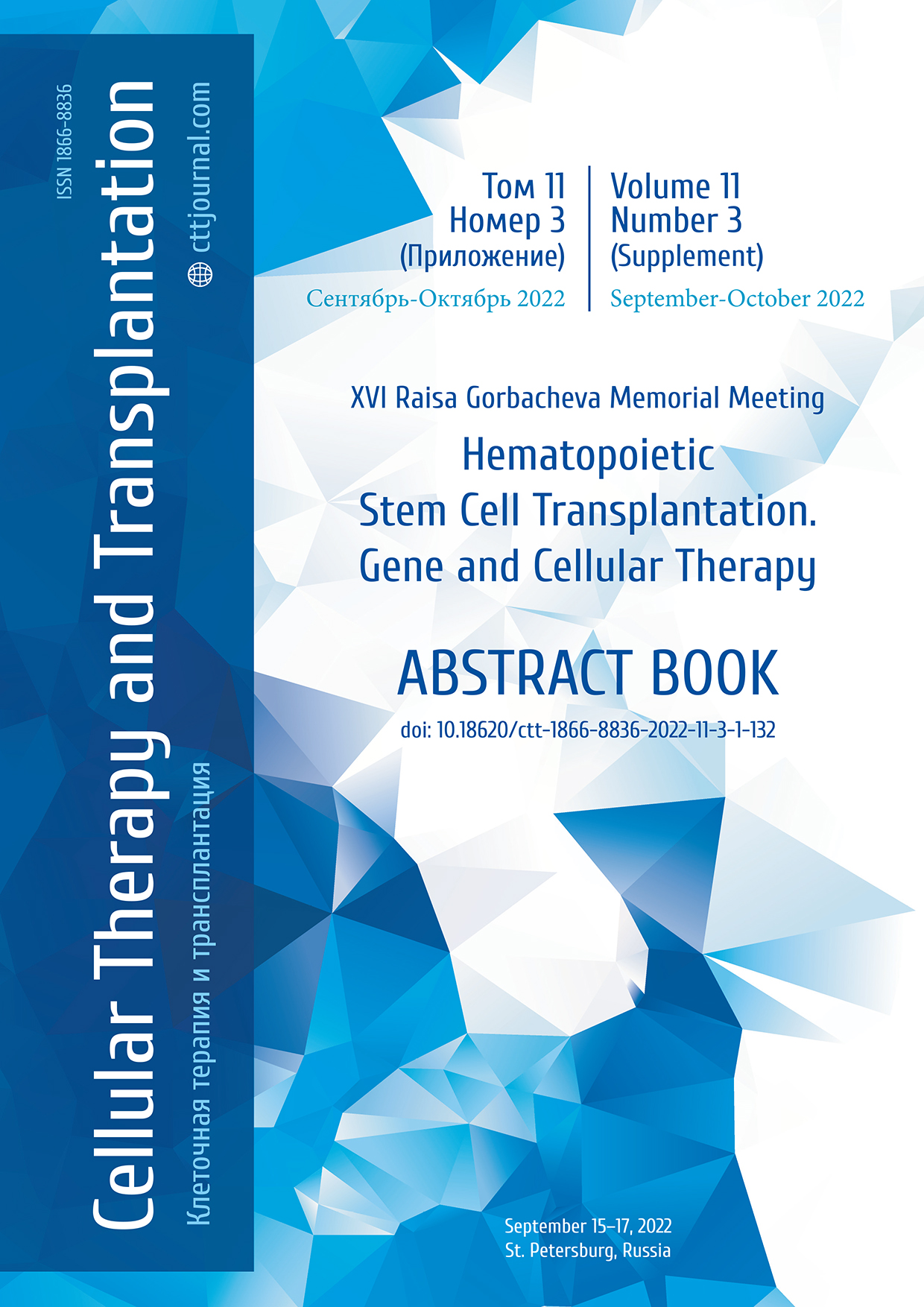HA-01. The influence of conditioning regimen on recovery of fertility following allogeneic stem cell transplantation in aplastic anemia patients
Darya A. Chebykina, Irina K. Golubovskaya, Nikita P. Volkov, Ivan S. Moiseev
RM Gorbacheva Research Institute, Pavlov University, St. Petersburg, Russia
Contact: Dr. Darya A. Chebykina, e-mail: daria.chebikina@yandex.ru
Summary
Allogeneic hematopoietic stem cell transplantation (allo-HSCT) is currently considered the golden standard treatment for young patients with aplastic anemia. Recovery of fertility (FR) after allo-HSCT has a significant influence upon the quality of life in the transplant survivors. The aim of the study was to evaluate the impact of conditioning regimen on fertility recovery in AA patients.
Patients and methods
A total of 62 patients with AA who survived for, at least, 1 year following allo-HSCT was included in our study. Most patients received busulfan-based (Bu) conditioning regimen, i.e., 39 patients (64%, group 2), and other 22 patients (36%) received cyclophosphamide-based (Cy) regimen (group 1). The median follow-up period was 5.5 (0.82-20) years. Most patients in group 1 were males (n=13, 57%). Nineteen (82%) patients received allo-HSCT from matched related donor (MRD); 4 (17%), from matched unrelated donor (MUD). The median age at allo-HSCT was 25 (17-38) years. Severe chronic graft-versus-host disease (GVHD) was registered in 2 cases (10%). Most patients in group 2 were females (n=21, 55%). Twenty-one patient (54%) received allo-HSCT from MUD, 18 (46%) were transplanted from MRD. Median age at allo-HSCT was 28 (17-50) years. Severe GVHD cases were registered in 3 cases (8%).
Results
Twenty-five patients (41%) had children before allo-HSCT. Twenty-three patients (38 %) did not plan to have children in the near future. 7% of patients underwent hysterectomy before allo-HSCT. Recovery of the menstrual cycle after allo-HSCT has been reported in 46% of cases (14 patients). Median time period from allo-HSCT to the menstrual cycle recovery was 2.3 (0.24-4.48) months. In 17 patients (54%), the cycle was not restored. Among the females who underwent allo-HSCT, nine pregnancies were registered which resulted in healthy live births. In the Bu-based group, one spontaneous pregnancy was registered, and one patient underwent IVF with a donor egg (3%). The men from the first group (Cy-based conditioning) had 5 children after allo-HSCT, and 6 children were born of them in second group (Bu-based conditioning). One patient from group 2 had to use IVF twice. А total of 21 pregnancies were registered. When analysing possible risk factors, only busulfan-based conditioning was a significant risk factor for impaired FR (p<0.03) and menstrual cycle recovery (p<0.03). Neither age of patient, type of donor, nor chronic GVHD had significant impact on fertility.
Conclusion
In our study, usage of busulfan in the conditioning regimen had a statistically significant impact upon recovery of fertility and the menstrual cycle after allo-HSCT.
Keywords
Aplastic anemia, hematopoietic stem cell transplantation, conditioning regimen, fertility.


